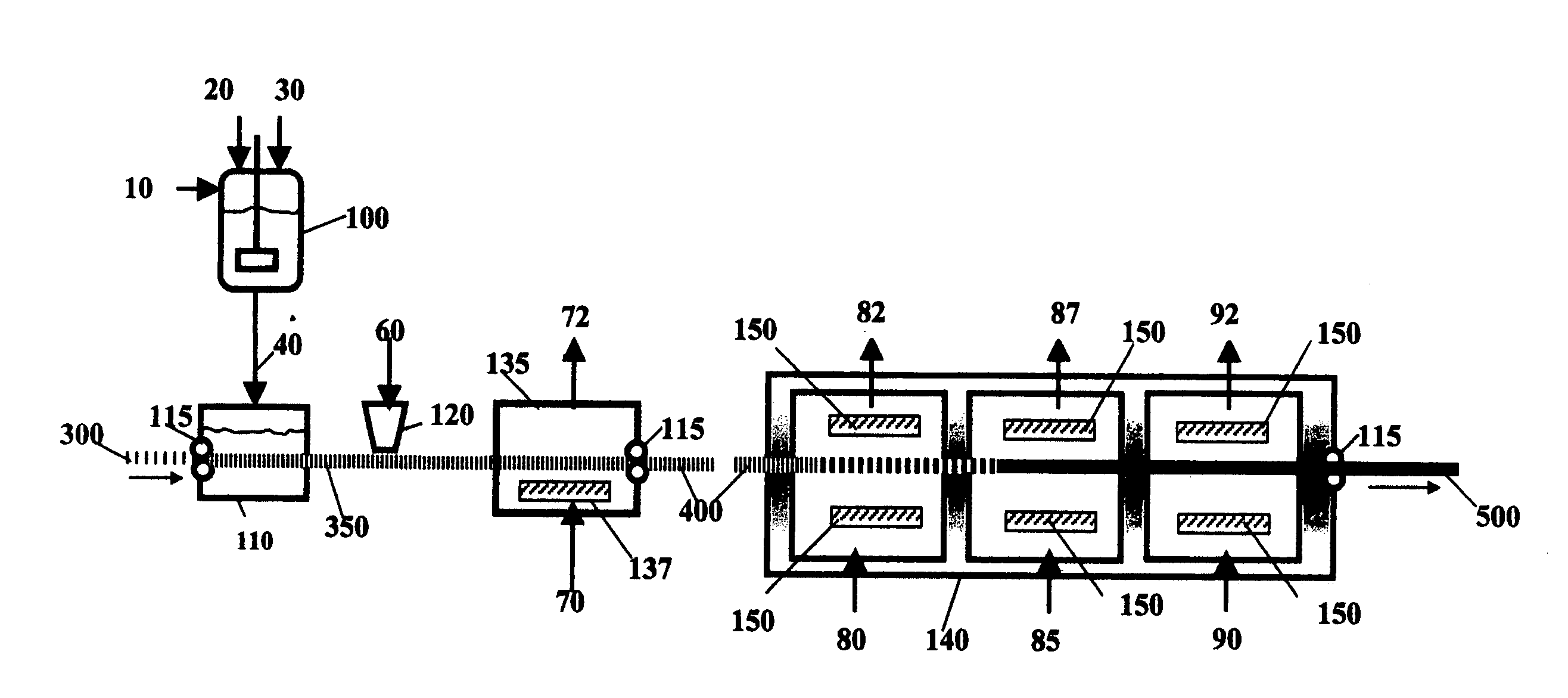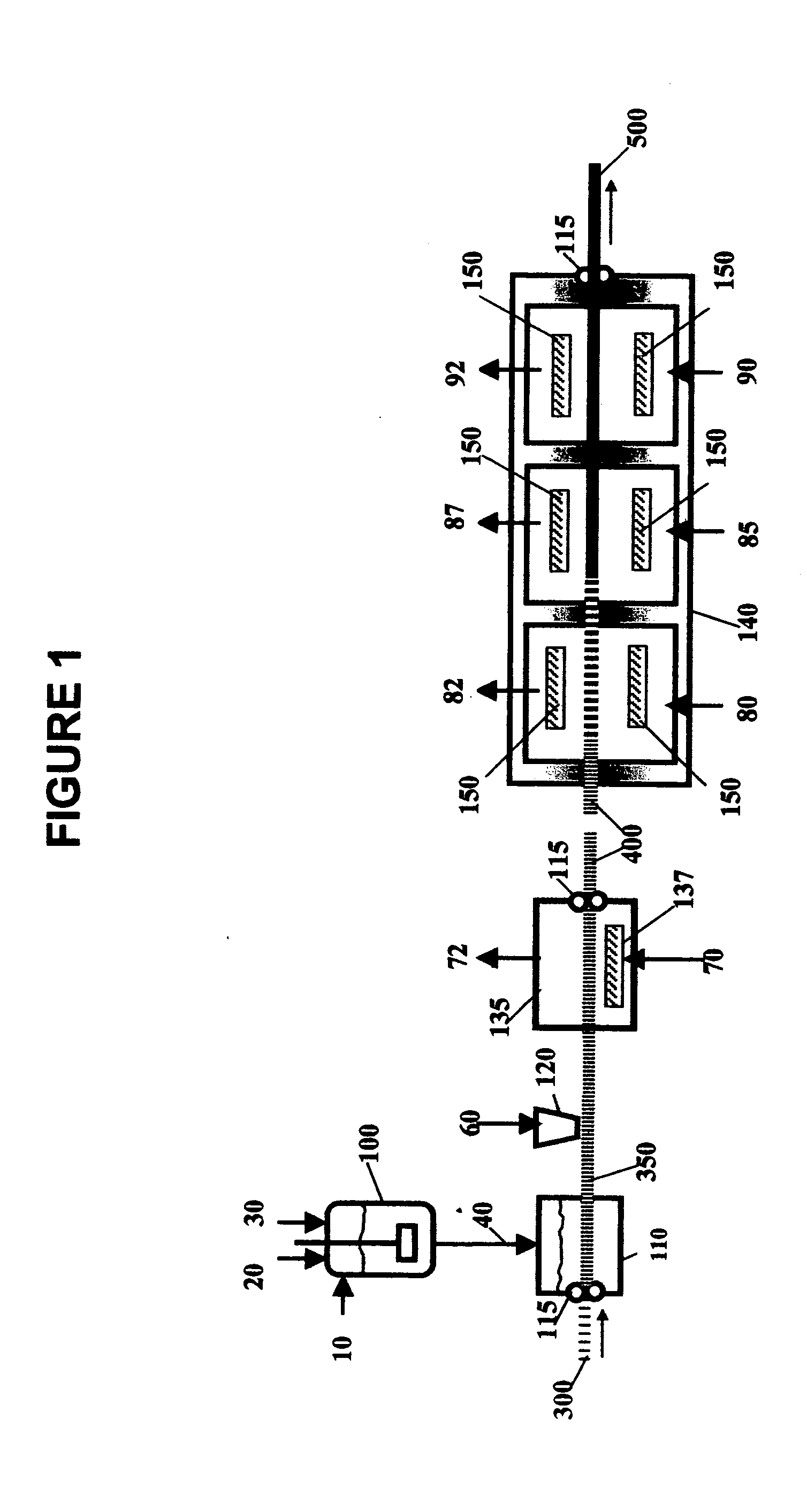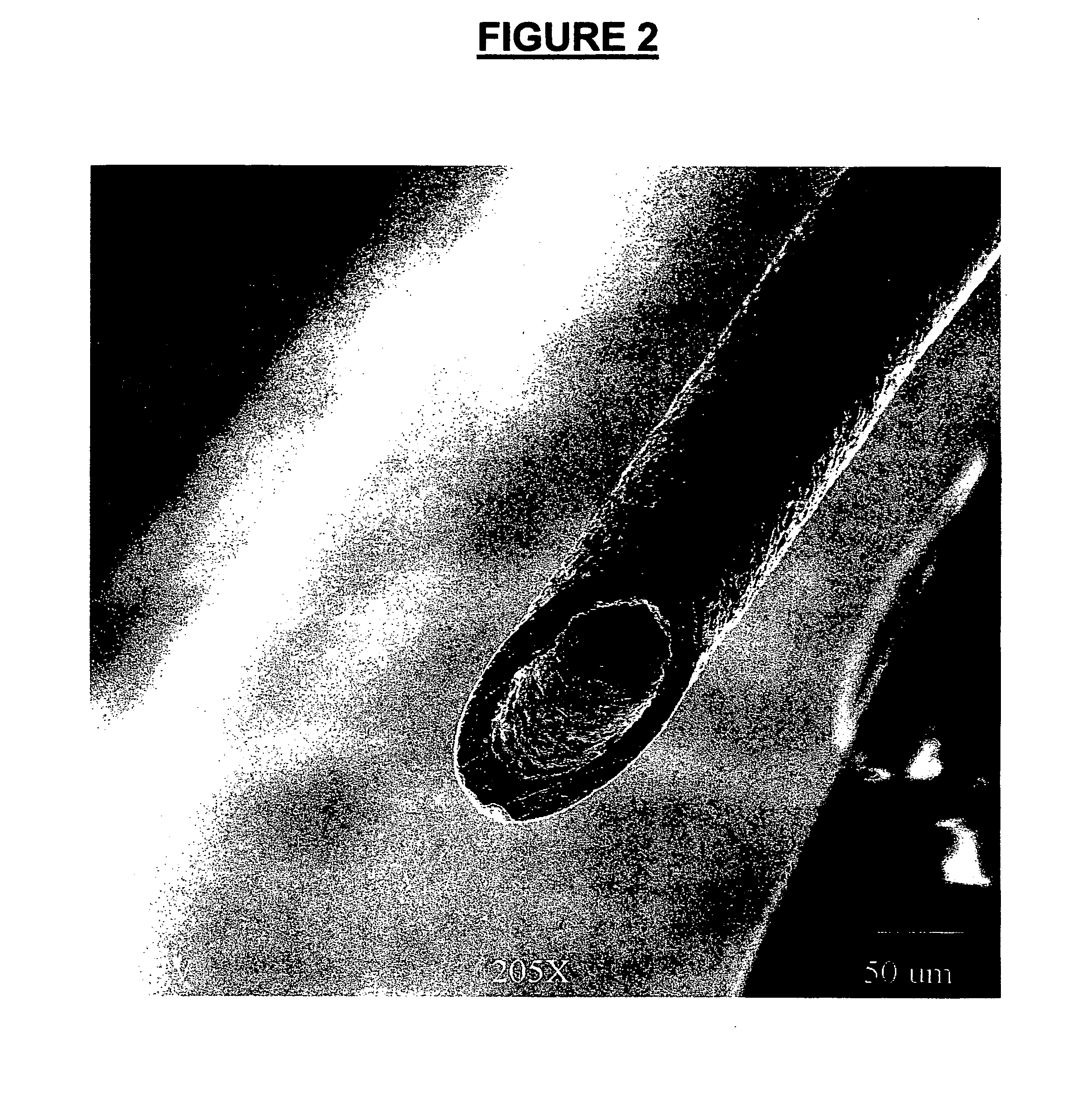Metal, ceramic and cermet articles formed from low viscosity aqueous slurries
a technology of aqueous slurries and cermets, which is applied in the direction of pretreatment surfaces, metal-working apparatus, synthetic resin layered products, etc., can solve the problems of affecting the environment, affecting the final product, and affecting the quality of the final product,
- Summary
- Abstract
- Description
- Claims
- Application Information
AI Technical Summary
Benefits of technology
Problems solved by technology
Method used
Image
Examples
example 1
316 Stainless Steel Hollow Foam
[0119]An open cell polyurethane foam block (Grade: Ultrafine) was obtained from E.N. Murray Co., Denver, Colo. having a pore density of 43.3 pores / cm. The interior and exterior surfaces of the foam block were coated with an aqueous slurry of 316 stainless steel powder in the following manner:
[0120]A 3.85 wt. % solution of gelatin (Type A Gelatin supplied by Gelita North America, Sergeant Bluff, Iowa) was prepared at 30° C. in water containing 0.0032 wt. % of potassium sorbate as a biocide. The gelation temperature of this solution was 23° C. Stainless steel powder, type 316 having an average particle size of 3 microns (Grade PF-3F, Epson Atmix Corporation, Aomori-ken, Japan and distributed by U.S. Bronze Co., Flemington, N.J.) was added to this solution along with a small amount of a silicone defoaming agent (Grade C-2290 New London Distributors, Inverness, Ill.) with vigorous stirring to produce a homogeneous slurry. The composition of the slurry was ...
example 2
17-4 PH Stainless Steel Hollow Foam
[0123]Example 1 was repeated using the same polyurethane foam and the same slurry composition except that the metal powder was 17-4 PH stainless steel having an average particle size of 8 microns (Epson Atmix Corporation, Aomori-ken, Japan). An article of the invention was formed having dimensions of 5.1 cm×5.1 cm×2.54 cm, a pore density of 43.3 pores / cm and dense, thin wall, hollow 17-4 PH stainless steel structural members with interior surfaces having essentially the initial form of the vaporized substrate. The article of the invention satisfied the inequality of Equation 1.
example 3
Nickel Hollow Foam
[0124]Example 1 was repeated using the same polyurethane foam and the same slurry composition except that the metal powder was nickel powder having an average particle size of 3 microns (type 210H, from Novamet, Wyckoff, N.J.). The same process was followed to coat, to remove excess slurry and to dry the coated foam. The dried coated foam block was then transferred to an oven and subjected to the time and temperature schedule in Table III. The times, and temperatures in the ambient atmospheres were sufficient to vaporize the polyurethane substrate to form a green hollow article, and then sufficient to sinter the nickel powder into a unitary article. An article of the invention was formed having dimensions of 5.1 cm×5.1 cm×2.54 cm, a pore density of 43.3 pores / cm and dense, thin wall, hollow nickel structural members with interior surfaces having essentially the initial form of the vaporized substrate. The article of the invention satisfied the inequality of Equatio...
PUM
| Property | Measurement | Unit |
|---|---|---|
| Fraction | aaaaa | aaaaa |
| Fraction | aaaaa | aaaaa |
| Fraction | aaaaa | aaaaa |
Abstract
Description
Claims
Application Information
 Login to View More
Login to View More - R&D
- Intellectual Property
- Life Sciences
- Materials
- Tech Scout
- Unparalleled Data Quality
- Higher Quality Content
- 60% Fewer Hallucinations
Browse by: Latest US Patents, China's latest patents, Technical Efficacy Thesaurus, Application Domain, Technology Topic, Popular Technical Reports.
© 2025 PatSnap. All rights reserved.Legal|Privacy policy|Modern Slavery Act Transparency Statement|Sitemap|About US| Contact US: help@patsnap.com



